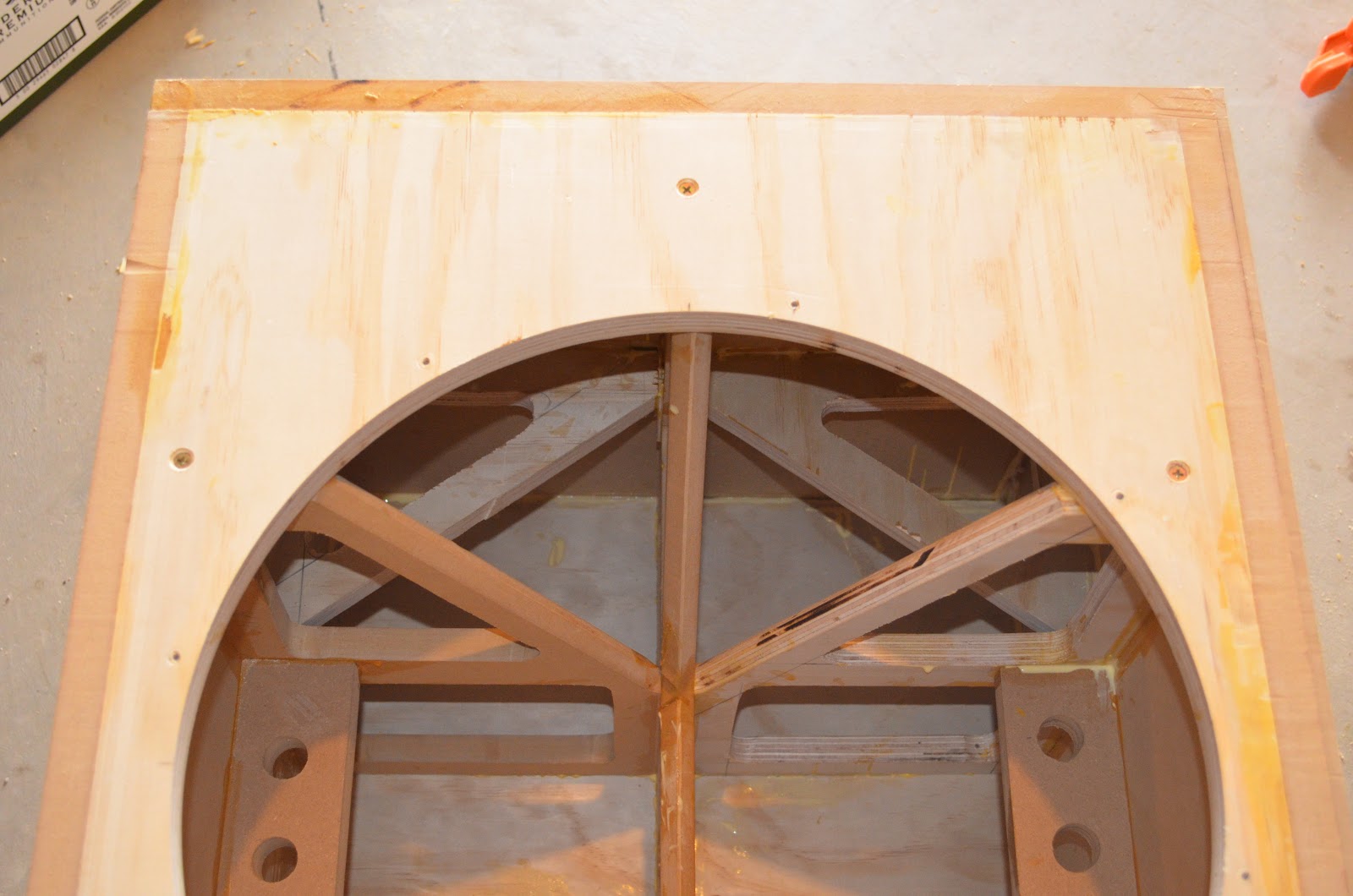Mandolin 2-way designed by Jeff Bagby
Curved Cabinet, floorstanding speaker, with 15L of "dead space" belowCNC cut front baffle and internal braces
Sides are 6 1/8" plies of Baltic Birch plywood, MDF, and HDF
Front panel is solid White Oak
I decided to make a small floorstanding speaker with curved sides using Jeff Bagby's Mandolin design. What attracted me to this design was the ability to get full-range extension, smooth midrange, and detailed highs in a faily compact package. I did a LOT of research before deciding which speakers to make. One of the critical factors was reading Jeff's Evaluation of his own design- he has an excellent reputation for quality designs. The second was some extensive measurements that John "Zaph" Krutke made of the SB Acoustics drivers, which by all accounts seemed to offer tremendous value at the price point they were at, comparable to midrange Scan Speak and Seas transducers.
I have always been intrigued by curved cabinet designs, and they do offer several benefits over traditional box design. First, they reduce standing waves inside the enclosure since the width mode and the depth mode are in a state of constant change. This reduces the resonant frequencies inside the cabinet. Second, they are very strong and stiff, with the layers being in constant mild tension. Lastly, the 6 layers of 3 different materials provide some internal damping of cabinet resonance and provide a mix of strength and mass. (MDF is dense, plywood is less dense but strong).
In addition to that, I decided to make these a robust floorstanding speaker. The reason for this is that I normally don't put bookshelf speakers on a bookshelf, and I figured if I was going to make speaker stands, why not build them into floorstanding. Of course, my decision to do so is something I have and continue to question. A floorstanding speaker is not as flexible for placement. I could conceiveably convert these into bookshelf speakers now. They would be 18" high though, which would be a little bit on the tall side.
 |
| SB Acoustics |
 |
| SB Acoustics |
 |
| Add caption |
 |
| Sketchup of Internal bracing and curved sides- some changes would be made later |
 |
| Box model using several sources of T/S data |






































